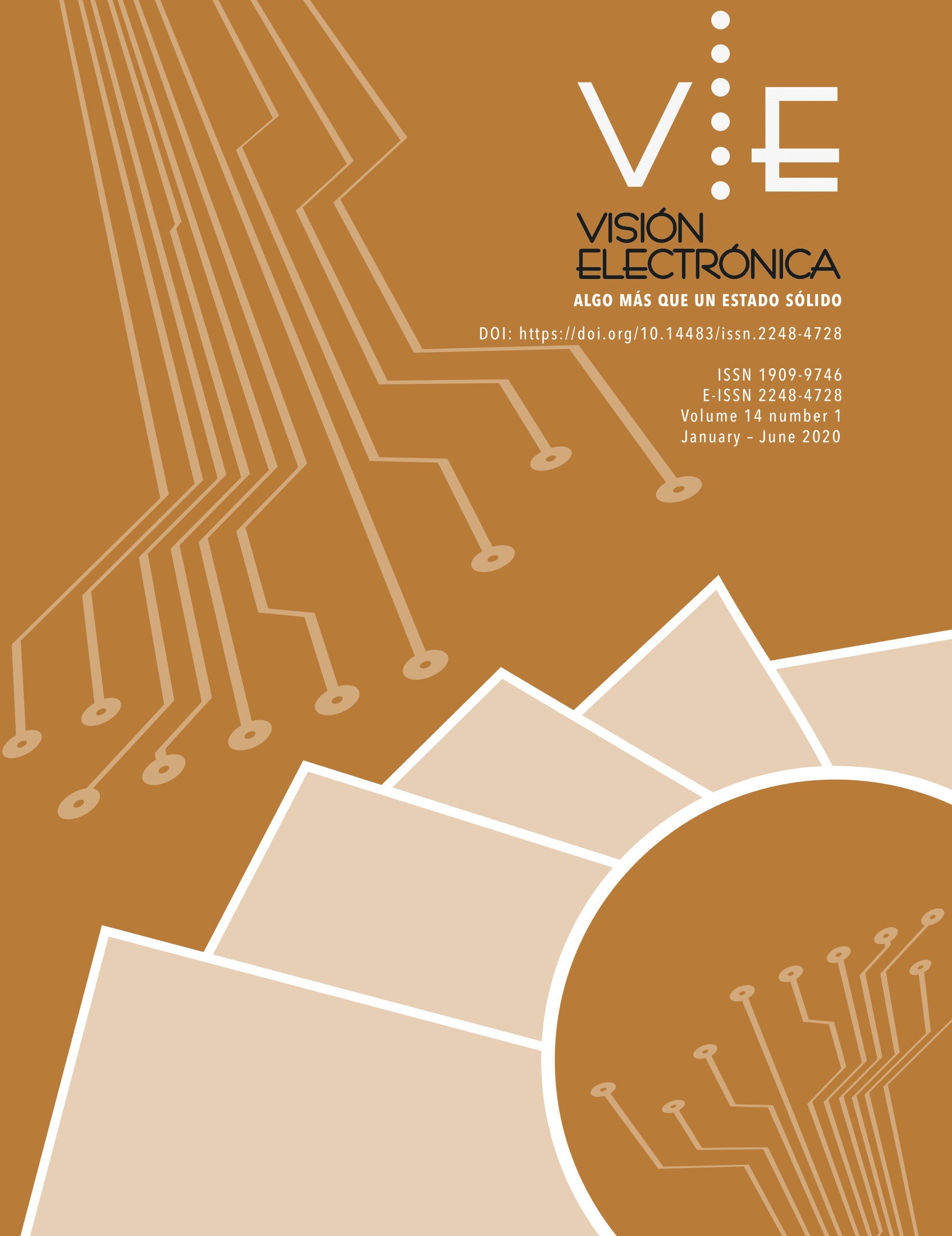DOI:
https://doi.org/10.14483/22484728.16348Publicado:
2020-01-31Número:
Vol. 14 Núm. 1 (2020)Sección:
Visión de CasoNavegación de robots móviles en formación de convoy
Navigation of mobile robots in formation of convoy
Palabras clave:
LabVIEW, LEGO NXT, Navegación, Formación en convoy (es).Palabras clave:
LabVIEW, LEGO NXT, Navigation, Training in convoy (en).Descargas
Resumen (es)
Se presenta la navegación para un convoy conformado por tres robots tipo lego, el cual alcanza un punto final establecido por medio de la cinemática del robot maestro que puede mantener una comunicación bluetooth, conociendo la cantidad de robots (esclavos) en la formación, que pueden incorporarse antes del recorrido o abandonar la formación durante el mismo.
El convoy evade un obstáculo el cual pude estar en diferentes coordenadas de la ruta establecida por el robot maestro. se estableció una comunicación infrarroja para la formación del convoy conservando unas distancias mínimas y máximas entre los integrantes de la formación. Los resultados obtenidos ofrecen un mínimo error en la consecución del punto final y se conforma la formación durante los diferentes desplazamientos realizados en un ambiente controlado.
Resumen (en)
Navigation is presented for a convoy made up of three lay-type robots, which reaches a final point established by means of the master robot's kinematics that can keep Bluetooth communication, knowing the number of robots (slaves) in the formation, which can be incorporated before the route or leave the formation during it.
The convoy evades an obstacle which can be in different coordinates of the route established by the master robot. an infrared communication was established for the formation of the convoy keeping minimum and maximum distances between the members of the formation. The results obtained offer a minimum error in the attainment of the final point and the formation is formed during the different displacements carried out in a controlled environment.
Referencias
B. Brumitt and M. Hebert, “Experiments in autonomous driving with concurrent goals and multiple vehicles”, in Proceedings IEEE International Conference on Robotics and Automation, vol. 3, pp. 1895–1902, 1998.
A. Botía, D. Gallardo, and M. I. Alfonso, “Comportamientos coordinados en formaciones de robots usando percepción visual y comunicación punto a punto 1”, in Workshop de Agentes Físicos, pp. 11-18, 2006.
RO-BOTICA, “Servo motor LEGO MINDSTORMS EV3”, 2017. [Online]. Available at: http://ro-botica.com/Producto/Servo-motor-LEGO-MINDSTORMS-EV3
ElectricBricks, “LEGO Education - 9841 Ladrillo Inteligente NXT - LEGO Education”. [Online]. Available at: https://www.electricbricks.com/lego-education-mindstorms-nxt-9841-ladrillo-inteligente-nxt-lego-education-p-251.html
Lego Mindstorms NXT, “El Sensor Ultrasónico (o de ultra sonido)”, 2009. [Online]. Available at: http://rbtnxt.blogspot.com/2009/02/el-sensor-ultrasonico-o-de-ultra-sonido.html
HiTechnic, “NXT IRLink Sensor”, 2012. [Online]. Available at: https://www.hitechnic.com/cgi-bin/commerce.cgi?key=NIL1046&preadd=action
HiTechnic, “NXT IRSeeker V2”, 2012. [Online]. Available at: https://www.hitechnic.com/cgi-bin/commerce.cgi?preadd=action&key=NSK1042
G. Bermúdez, “Modelamiento cinemático y odométrico de robots móviles: aspectos matemáticos”, Tecnura, vol. 6, no. 12, pp. 19-30, january 2003. https://doi.org/10.14483/22487638.6131
G. R. Bermúdez, M. R. Pereira, E. A. González, L. Y. Osorio and J. E. Ortiz, “Modelo cinemático de un robot móvil implementado con LEGO NXT para un sistema de localización Indoor diseñado en LABVIEW”, Tecnura, vol. 16, pp. 23–33, october 2012. https://doi.org/10.14483/22487638.6810
M. Nitulescu, “Solutions for modeling and control in mobile robotics”, Journal of Control Engineering and Applied Informatics, vol. 9, no. 3, pp. 43-50, 2007.
K. Duarte Barón and C. Borrás Pinilla, “Generalidades de robots paralelos”, Visión electrónica, vol. 10, no. 1, pp. 102-112, jun. 2016. https://doi.org/10.14483/22484728.11711
S. Otón Tortosa, J. A. Gutiérrez de Mesa, and C. Batanero Ochaita, “Una implementación de afa para la educación virtual accesible”, Rev. vínculos, vol. 12, no. 1, pp. 6-17, jun. 2016. https://doi.org/10.14483/2322939X.10524
Cómo citar
APA
ACM
ACS
ABNT
Chicago
Harvard
IEEE
MLA
Turabian
Vancouver
Descargar cita
Licencia

Esta obra está bajo una licencia internacional Creative Commons Atribución-NoComercial 4.0.
.png)
atribución- no comercial 4.0 International






.jpg)





